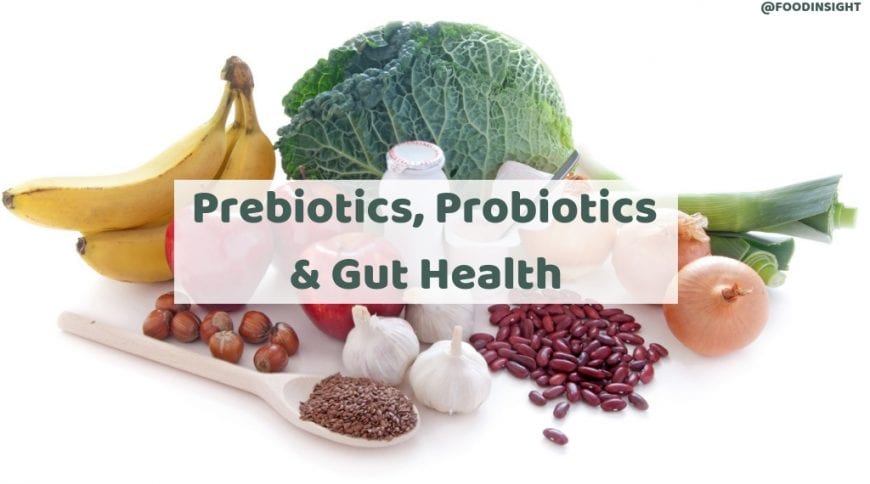
Bacteria may sound like something you want to avoid, after all, isn’t that why antibiotics are prescribed, to remove bacteria? However, the human body contains trillions of bacteria that perform various functions along the Gastrointestinal (GI) tract, ensuring a healthy gut and a healthy body. All food matter, everything we consume passes through our GI tract and is converted into energy to be used by the body. Whether its nutrients, medicines or simply fiber, having a healthy gut is important for the regular functioning of our body.
As awareness on the importance of bacteria, especially in the gut, increases there is more research on the ways that the bacteria can be improved, for example through probiotic vitamins and prebiotics. . While probiotics add to the living bacteria in the gut, prebiotics is typically food ingredients that are non-digestible but feed the existing good bacteria in the gut. A healthy variety and amount of bacteria promote better health overall and help in reducing illnesses.
Global Prebiotics Market Is Expected To Reach $7bn By 2024
The global prebiotics market is expected to reach a value of $6 billion by 2022 itself, growing at a CAGR (compound annual growth rate) of a massive 11 percent. Currently, Europe is the leading prebiotics consumer in the market, accounting for nearly 50 percent of the demand, while the APAC region is projected to have the highest growth in the market over the coming 5 years.
The main source of prebiotics at present are oligosaccharides, which are plant-based carbohydrate compound which is further classified as fructooligosaccharides (FOS) and galactooligosaccharides (GOS). Both forms of prebiotics are popularly used by health maintenance organizations (HMO) and the food and beverage industry.
Top 5 Reasons Behind Growth Of The Global Prebiotics Market
- Prebiotics in Infant Food
The infant food end-user segment currently holds approximately 24 percent of the demand share for prebiotics and is expected to grow at the fastest rate driven by greater consumer awareness. Research has found that human breast milk is a rich source of GOS prebiotics, which improves the baby’s gut health and is also said to boost cognitive function. In an attempt to recreate the health benefits of breast milk, infant formula manufacturers are adding prebiotics to infant food. Despite the awareness of the health benefits of breastfeeding many mothers are not able to 100 percent breastfeed their babies, especially with more mothers returning to the workforce after having babies.
- Prebiotics in Livestock Feed
Antibiotic Growth Promoters (AGP) have been used across the world to fight microbial infections in livestock such as poultry for decades, however, the increase in antimicrobial resistance has led to the EU and FDA banning the use of AGPs in food and feedstock, resulting in a demand for a substitute. Among the top substitutes for AGP are prebiotics that stimulates the growth and activity of positive bacteria in the gastrointestinal tract of the animal, eliminating the pathogenic bacteria.
- Prebiotics For Preventive Healthcare
Prevention is better than a cure, and by maintaining a healthy gut and gastrointestinal system, you can keep numerous health conditions at bay. Prebiotics are immensely useful to maintaining good health as they feed the useful bacteria in your body, helping them grow and carry out their normal functions. As a result, adding prebiotics in your diet will help your body absorb nutrients in a better manner, reduce the risks of food allergies, and facilitate better absorption of calcium for better bone health. In addition, healthy bacteria can use prebiotics to improve gut lining, reducing the risk of intestinal issues. Prebiotics also improve bowel functions, thereby reducing the risk of infection and helping support your immune system.
- Prebiotics Promote Sensory Appeal Of Food
It is, unfortunately, a fact that food items that have sensory appeal, in terms of being tasty, smelling good and tasting good, have greater popularity in comparison to bland products touted for health benefits. Prebiotics has great sensory appeal and is easily melded into popular food items such as fermented milk, sports drinks, energy bars, sugar-free candy, breakfast cereals, baked goods and more. They impart a great texture and stability while increasing the water-binding capacity of the food item, making prebiotics easy to fit into an average person’s diet.
- Prebiotics Under Research
Prebiotics are a relatively new discovery, and in the few decades that prebiotics has been used, a wide multitude of applications and uses have emerged. More research is currently underway to find even more uses of the miraculous prebiotics, ranging from appetite control in children to treat childhood obesity, to helping control lifestyle diseases and cardiovascular diseases. Research gas already revealed a marked increase in insulin stimulation due to prebiotics, indicating their potential in managing metabolic disorders like diabetes 2. Prebiotics may also be useful during chemotherapy treatments for cancer and can also have applications in pharmaceuticals.
Prebiotics has emerged as an amazingly useful food ingredient, offering numerous health benefits and supporting a healthy gut. Easily accessible and in great demand across the world, the global prebiotics market is expected to continue to grow at a rapid pace in the coming years.
